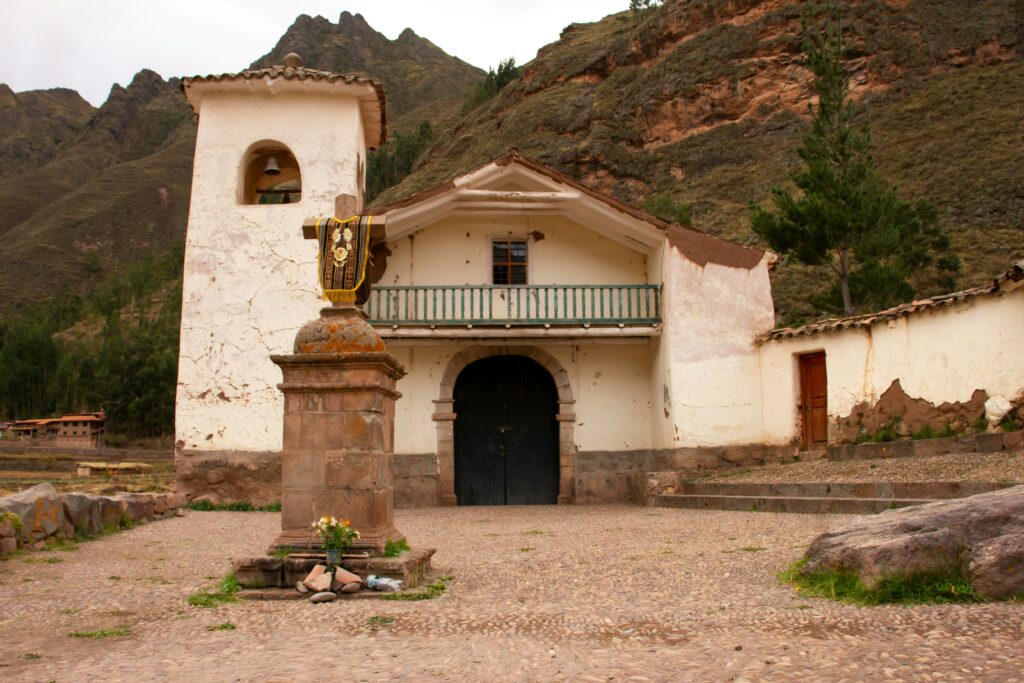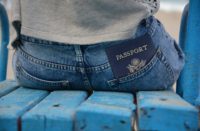Buying land in the Sacred Valley is full of caveats! Here’s my experience
By Kintarian Amaru
This is a warning to any unsuspecting land buyers in Pisac. And in other locations in the Sacred Valley. Even Peru in general!
Though they seem desirable, there are many pieces of land being offered for sale that cannot be built upon. And here’s why. In February of 2022, the municipality of Pisaq adopted a new district plan. This district plan has over 30 different zones. They range from commercial to residential to agricultural to pre-urban.
Take for example the area of Rinconada, Pisac. Namely, the land behind Royal Inca Hotel and up the Rinconada hill. The majority of that land is now zoned as ‘pre-urban’. This means that anyone who built or wants to build a home there, from February of 2022 onwards, will either have to pay a steep multa (fine) to the ministry of culture, or will face having their building torn down. And more and more zones are being dubbed ‘pre-urban’.
Pre-urban zoning means that you will only be able to freely build there once the municipality of Pisaq changes that area’s zoning to residential. This will likely happen in 10 years from February 2022 onwards. All homes constructed prior to February of 2022 do not fall under these restrictions, because prior to then, no district plan existed.
Caveats On Buying Land in the Sacred Valley

Dropping Prices
Another example is the long, lighter green strip of land shown running along the left hand side of the river next to Royal Inca, which sits at the very base of Apu Intihuatana. It is gorgeous land, my Dad and I had every intention of buying about half of it about a year ago.
Back then, the vendor initially wanted to directly sell us half of this land at around $50 per m2. Then later dropped the price to just under $30 per m2. Both the vendor and our then supposed “lawyer” (who ended up being a cheating criminal), lied to us and told us we could build there. They even told us how high we could go and what materials we could and couldn’t use.
Fortunately, I consulted another lawyer and did extensive direct research with the municipalities of Pisac and Calca, as well as with the ministry of culture, prior to signing our contract. I discovered that this land can never ever be built upon. It is zoned ‘agricultural’ in a strictly archeological zone, as defined by the ministry of culture. This immediately dropped its sale value down to around $15 to $18 per m2.
Any building erected on there will be automatically torn down by the ministry of culture. And the ministry will not accept a multa to save the building process on land with those zoning restrictions.
A Tug Of War
There is something of a private tug of war going on between the local communities and the ministry of culture. You may find that communities can attempt to sell you land quite cheaply. But they won’t tell you about the municipality and/or ministry building restrictions on it.
Even though the community may come from a place of good will when attempting to reassure you that you can build there, you won’t be able to. That’s because communities generally don’t seem to agree with or accept municipality/ministry regulations, plans and zoning changes on real estate that is theirs to sell. But the government takes precedence.
Why Titles Are Needed
Buying land without a SUNARP title certificate directly from a local Andean community is another key warning on buying land in the Sacred Valley. You may be dealing with one vendor, or supposed “owner” or “authorised vendor” of the land, from the community. However, behind that owner is the collective voice of the entire community.
And if that person sells you the land and you don’t know that the community has rights to that land, then that community may end up dictating to you what you can and cannot do with that land indefinitely. It can also claim that the person who sold you the land wasn’t authorised to do so by the community and can legally force you to return the land to the community.
The community may also decide to enforce your participation in or contribution to community festival activities. Or you may have to make involuntary “donations” towards community projects, or attend local community meetings on a regular basis. I would therefore recommend that you insist on receiving a SUNARP title for the land you are interested in, prior to purchasing lan anywhere in Peru.
Dealing With Communities
There is nothing at all wrong with buying community land. It is usually less costly than privately owned and titled land. That’s largely due to not having a SUNARP title certificate, which means you’ll then have to accept full community involvement in the land you buy.
However, there is nothing stopping you from making a deal with the whole community, wherein the community decides to give one community member full legally binding, contractual authorisation to act as vendor on its behalf and then furthermore obtains a hassle free SUNARP title certificate for that land, prior to your purchase. This may increase your cost, but will also give you peace of mind in the long run.
Weird Rules
Also please be aware of another odd warning on buying land in the Sacred Valley. In short, there are legal considerations and regulations around vendors who are female and around the elderly from age 75 onwards. The elderly from that age onwards, must first pass a certified psychological test of fitness, in order to both either buy or sell land in Peru.
And women may not sell land without written permission from their spouse. Even if such a woman is listed as sole owner of that land on the title certificate. If there is no spouse but there are brothers or male cousins, they too are best consulted first.
Size Matters
A further warning on buying land in the Sacred Valley is to always make sure that the m2 being sold, match the CRI (district plan measurements, at the municipality). I’ve had someone try to sell me a piece of land that was 268 m2 smaller than shown on the CRI and then refuse to drop their sale price accordingly. I’ve had someone try to sell me a piece of land that supposedly had road frontage, only to find out that the owner stole half their land from their neighbour and surrounded it with a stone wall to claim it as their own and attempted to sell me the lot in their name, illegally.
To know for sure, it’s best that you visit the municipality you wish to buy in and let one of the architects there show you the exact size and shape of the land you wish to buy on the district plan. That plan and any SUNARP title certificate will also show all of the owners’ names in full. And you will need to make sure that any sale and purchase contract for real estate you buy in Peru is entered into between you as the buyer and all of the owners of that real estate as the vendors. Which in some cases can be entire family groups!
Also please be aware that contrary to the Western world, lawyers here in Perú hold fewer legal powers than notaries. Some lawyers study onwards, in order to become notaries. So get your land documents checked by a good, reliable lawyer, who’s background you have checked thoroughly. I cannot stress this enough. Then the contract gets drawn up by the notary.
As a buyer, you will pay a purchaser tax called alcabala to the government. This constitutes 3% of the total purchase price. The vendor pays a sales tax between 5 to 10% of the sale price, depending on the location of the property. The notary fee is split 50/50 between the vendor and the buyer and is usually between S/700 to S/1,200 in total.
Beware Ruins
If you wish to build a residential dwelling or more than one on your land, as a rule of thumb, this is one of the most important warnings on buying land in the Sacred Valley: stay clear of any land in the entire Sacred Valley and Peru as a whole, that is close to, borders or contains:
- A pre Hispanic wall (those are the ancient stone walls that display round boulder type smaller rocks)
- Inca tombs
- Inca Sacred sites
- Inca canals
- Ruins of any kind
You will not and never be able to build on or near such. No matter where in the Sacred Valley or Perú as a whole they are located. Those are strict ministry regulations and they police them. Last year, a fully built private home located at the foot of Apu Ñusta was torn down by the ministry here in Pisaq. It happened just because the house was located ‘close’ to a pre Hispanic wall. It wasn’t even on that property!
My Best Recommendations
Always get a topographer to measure out the land you wish to buy. Either your own, or if you can trust your lawyer, then your lawyer’s topographer. A good lawyer will charge around S/1,500 to S/1,800 for doing a full legal document revision, which can even include a full topography report.
I would also personally recommend that you deal with the vendors directly, rather than going through an agent. Unless you can definitely trust that agent or know them personally as a trustworthy person. Some agents will try to double dip in agent fees. As in attempting to charge both the vendor and the buyer a commission fee. Their fee, like everywhere else, must be paid by the vendor who hired them.
And make sure that the vendor definitely hired that agent, prior to entering into any negotiations with said agent. Many agents don’t have contractual agreements with the vendors. But they falsely represent themselves to potential buyers as vendor’s representatives. Then, when a potential buyer is interested in buying, the agent will approach the vendor to convince them to sell their land through them, even if it was never for sale to begin with. Only to then claim the commission.
In other words, anyone can claim to be an agent here. Agents are generally not qualified, vetted agents and often aren’t hired by vendors to represent them. Which means that unless you have absolute confidence in an agent, it would be better for you to approach land owners directly and to ask them if they would consider selling their land to you. And if so, to then make that vendor an offer directly instead.
In Conclusion
I’m sure there are many more pitfalls for potential buyers to be aware of. But these are some of the main ones that I know of. And if this post helps even one person have less hassle buying land, it was well worth it!
Good luck and stay vigilant. It’s your money and once you’ve bought, there is no going back. Enforcing legal action in this country is highly challenging, if not in many cases outright impossible. So doing a ton of personal research, prior to purchasing and even prior to your legal representative doing the legal document revision, is well worth your time and effort.
Do you have any warnings on buying land in the Sacred Valley yourself? Let us know in the comments, below!





